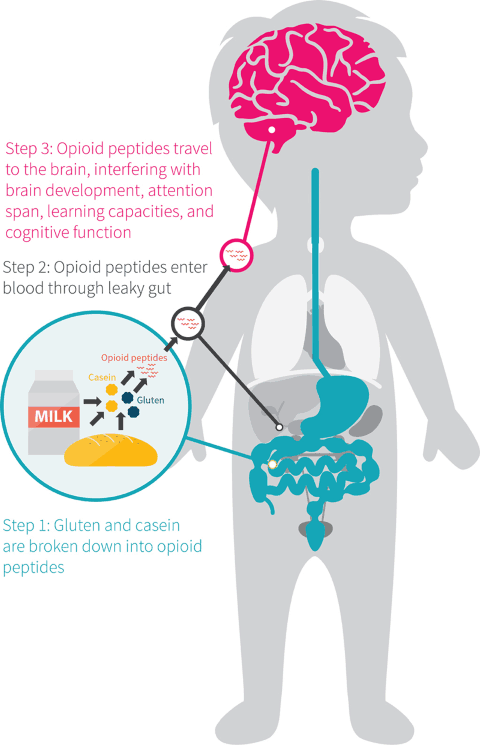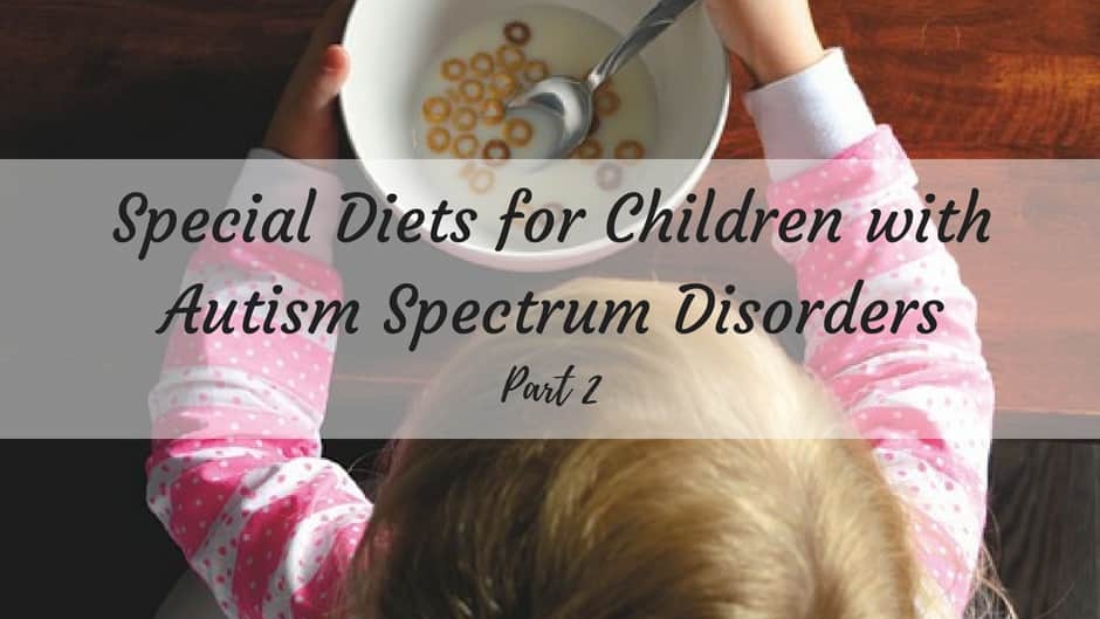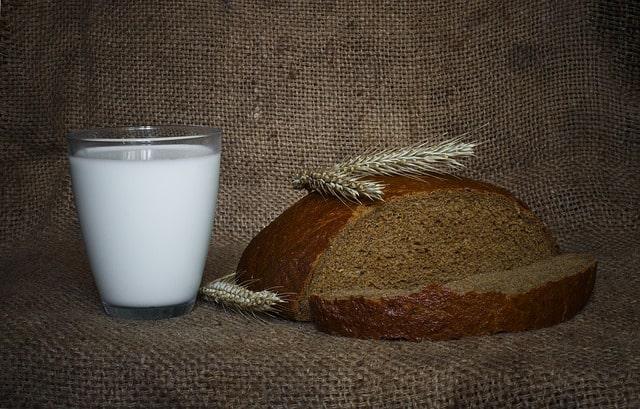There is no cure for Autism Spectrum Disorder (ASD); the ideal treatment includes educational and behavioral interventions that meet the specific needs of the child. Because autism is incurable, many parents seek alternative therapies, including specialized diets. Although research is limited and results vary, several diet strategies have been suggested as possible treatments for ASD.
One of the most popular diets eliminates gluten (a protein found in most grains, including wheat) as well as casein (a milk protein). Other dietary interventions include restricting food additives; including probiotics in the diet; following a yeast-free diet; and supplementing the diet with vitamins and minerals.
The amount of information available via internet, books, parent network and other organizations to parents of children with ASD, can be overwhelming and often contradictory.
SPECIAL DIETS
There are many diets parents say work for their children to improve health, behaviour, attention, sleep and reduce ASD symptoms. Although some of these diets are a popular treatment for ASD but there is a lack of consistent and good quality scientific evidence to support their recommendation as a treatment for ASD symptoms.
All diets have something in common – unprocessed foods. Feeding your special needs child a healthy and balanced diet help with therapy results and behaviour. Let’s take a look at these diets.
GLUTEN FREE CASEIN FREE (GFCF) DIET
The most commonly tried and the most studied diet is the Gluten Free Casein Free (GFCF) Diet. Gluten is a type of protein found in wheat, rye and barley. Casein is a protein found in milk.

It has been suggested that people with ASD have a “leaky gut”. The poorly digested casein and gluten leak into the bloodstream where these “opoid-like” proteins interfere with the normal functioning of the nervous system, affecting mental function and behaviour. Therefore, it is proposed that by eliminating foods containing gluten and casein from the diet, autistic behaviours may be reduced.
How To
Prior to starting a gluten free diet, it is important to test for Celiac Disease especially if the child exhibits any potential signs or has first degree relatives with Celiac or other auto-immune disorders. The reason this is suggested is that gluten needs to be consumed for the test for Celiac to be accurate and in case the family chooses to stay on the diet, it is important to test first.
Also, prior to starting the diet, the family requires education regarding foods to avoid, foods to eat and hidden sources of gluten and casein.
It is really important to not just focus on what not to eat, but to explore what the child can eat.
There are many expensive gluten free products available but there are also many foods that are NATURALLY gluten free and less costly then the specialty products.
It is helpful to eliminate gluten or casein one at a time so that you can assess the effects of each protein. Normally, casein is easier to remove from the diet first.
Evidence
GFCF diets can increase the challenge of ensuring adequate nutrition. Some studies indicate that these diets may be effective for certain children, controlled scientific studies have not proven this to be true so more research is needed.
FEINGOLD DIET (PROGRAM)
This diet is food elimination program developed by Ben F. Feingold M.D. This diet is created for individual who has behaviour disorders, such as hyperactivity, learning problems, and attention deficit disorder (ADD). It removes all synthetic colourings and flavourings, certain preservatives (BHT, BHA and TBHQ) and salicylates from the diet (Check out the list).
SYNTHETIC (ARTIFICIAL) COLORS & FOOD DYES
Nearly all food dyes (Blue 1 and 2, Green 3, Red 3, Red 40, and Yellow 5 and 6, Citrus Red 2) found in modern food, medicine, toothpaste, beverages, vitamins, cosmetics are synthetic. They are made from petroleum.
A dye which is listed as “FD&C” is permitted by the Food & Drug Administration (FDA) to be added to foods, drugs, and cosmetics.
A randomized, double-blinded, placebo-controlled trial was conducted at Southampton University in England. They found a link to food dyes and hyperactive behavior in children. The research does not prove that food colorings actually cause ADHD behaviors but there does seem to be a link.
SYNTHETIC (ARTIFICIAL) FLAVOURING
Used as low-cost substitutes for natural flavourings. An artificial flavoring may be composed of hundreds of separate chemicals which are not usually listed individually, there is no restriction on what a company can use to flavor food. You may see them listed as “flavouring”, “artificial flavouring”, “butter favouring” .
Artificial flavorings are combinations of many chemicals, both natural and synthetic.
“Vanillin” (sometimes listed as “vanilla flavoring”) is very common artificial flavoring that causes problems for many people. “Natural flavoring” does not always mean “all-natural flavoring” – it depends on the brand.
The only vanilla accepted for the Feingold Program’s Foodlist is vanilla that actually came from a vanilla bean.
Most flavorings have simply never been studied for “side effects” relating to human health, and none has ever been studied for neurotoxicity.
Of course, out of the thousands of artificial flavorings commonly used, some are surely perfectly safe; however, nobody knows which ones they are – and even if we knew, we still would not know which ones were in what food products. Therefore, the Feingold Program must simply eliminate all of them.
ARTIFICIAL PRESERVATIVES
Preservatives are used primarily to prevent fats and shortening from becoming rancid. They allow foods to have a longer shelf-life. Most preservatives are not believed to be a health hazard, but the three petroleum-based preservatives that are eliminated by the Feingold Diet have been found to trigger behavior and health problems:
- BHA (Butylated Hydroxyanisole, E320)
- BHT (Butylated Hydroxytoluene, E131)
- TBHQ (Tertiary Butylhydroquinone, E319).
While the avoidance of particular additives is very common, there has been little good quality research on the affect of food additives on people with ASD.
ARTIFICIAL SWEETENERS
Aspartame, acesulfame-K, neotame, and saccharin have been known to cause headaches, mood changes, nausea, vomiting, and diarrhea in the general population (here).
SALICYLATES
Salicylates are a family of plant substances found naturally in a variety of fruits, vegetables, nuts, herbs, jams and juices. Also, these chemical compounds are similar to aspirin. Salicylates may be elevated in produce that is picked early and shipped long distances and in concentrated foods such as tomato sauce, ketchup or fruit juices.
Foods high in salicylates include almonds, apples, apricots, avocados, berries, broccoli, cherries, citrus fruits, cloves, coffee, cucumbers, dried fruits, grapes, kiwis, nectarines, olive oil, peaches, peppers, pickles, pineapple, plums, prunes, raisins, rose hips, strawberries, tea and tomatoes.
How To
Current recommendations of the Feingold diet would recommend a two-stage plan. Stage One lasts 4 weeks, and eliminates the above-listed ingredients, plus natural salicylates (including aspirin products). After a person has been successfully on this Stage One diet for 4-6 weeks, the food containing natural salicylates are added back in carefully to to test for tolerance. The effects of natural salicylates are dose-dependent. Some people find they need to remind on Stage One, while others are able to tolerate some salicylate-containing items occasionally, and still others can eat them freely. The artificial colors, flavours, preservatives, and sweeteners listed above are not re-introduced.
Evidence
YEAST FREE DIET
It is believed that a “leaky gut” in people with ASD, may be caused by an overgrowth of yeasts (Candida) in the gut, resulting in symptoms such as fatigue, headache, mood swings, sinus, congestion, depression, poor memory and concentration and cravings for sweets. Excess yeast in the gut is thought to penetrate the intestine wall, causing yeast and other unwanted particles to be absorbed into the body. The absorbed yeast particles are thought to active the immune system, resulting in an allergic hypersensitivity to Candida.
How To
Yeast live and feed on sugar. Therefore, the diet requires to avoid all foods that contain any type of yeast, and foods that break down into simple sugars.
Evidence
Yeast overgrowth in the gut is usually treated by prescribed medications and there is no evidence that eating less dietary sources of yeasts helps.
SPECIFIC CARBOHYDRATES DIET (SCD)
The Specific Carbohydrate Diet (SCD) helps children with autism who may be experiencing difficulty with digestion or malabsorption in the intestine resulting in GI issues. SCD starts to help and restore balance in the intestines by eliminating complex carbohydrates the the body has difficulty breaking down, which causes an overgrowth bacteria. The bacteria in the intestines feed off the complex carbohydrates creating more bacteria, which SCG refers to as the vicious cycle.
How To
This is not a “low carb diet” or “Paleo Diet”. The diet eliminates foods that contain complex carbohydrates (rice and potatoes), and replaces with simple carbohydrates (banana, and squashes). The diet will continue to keep the body well feed but starve the microbial flora. The SCD also encourages the use of fermented foods, especially homemade yogurt, and probiotics. The consumption of fermented foods and probiotics replaces the starving microflora with beneficial bacteria. Given enough time, the diet changes the nature of the microbial flora and gives the body the nutrients and environment needed to heal.
Evidence
The SCD is a very strict, complex and restrictive diet which requires an individual to prepare foods on his own. More scientific studies are needed for people with ASD.
Resources
SUPPLEMENTATION
People with autism may have abnormal or impaired metabolic or biochemical processes and high doses of vitamins or minerals may be needed to correct for this (here) . Also, children with autism are selective eaters and supplement use may just by improving overall nutrient intake.
The treatment may provide “benefit” but may not be “treating” the autism.
There are numerous dietary supplements which have been suggested as possible treatments for people with ASD including Vitamin B6, Folic Acid, Vitamin B12, Vitamin C, Vitamin D, Magnesium, Omega-3 fatty acids, Probiotics and Digestive Enzyme.
BOTTOM LINE
More research is needed to support a link between autism symptoms and nutrition. If you are considering a supplement or a special diet, speak with your child’s doctor or a Registered Dietitian first. They can help you make the right choice and lower the risk of possible side effects or nutrient deficiencies.
Keep in mind that restrictive diets require careful planning to make sure your child’s nutrition needs are being met.







[…] you enjoyed this post, you may also be interested in learning about Special Diet for Autism. […]